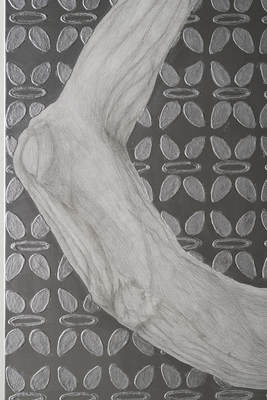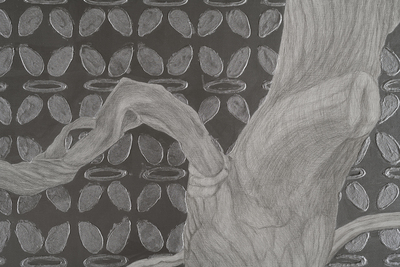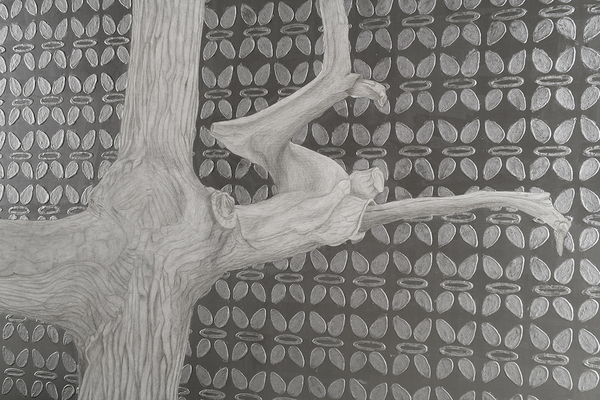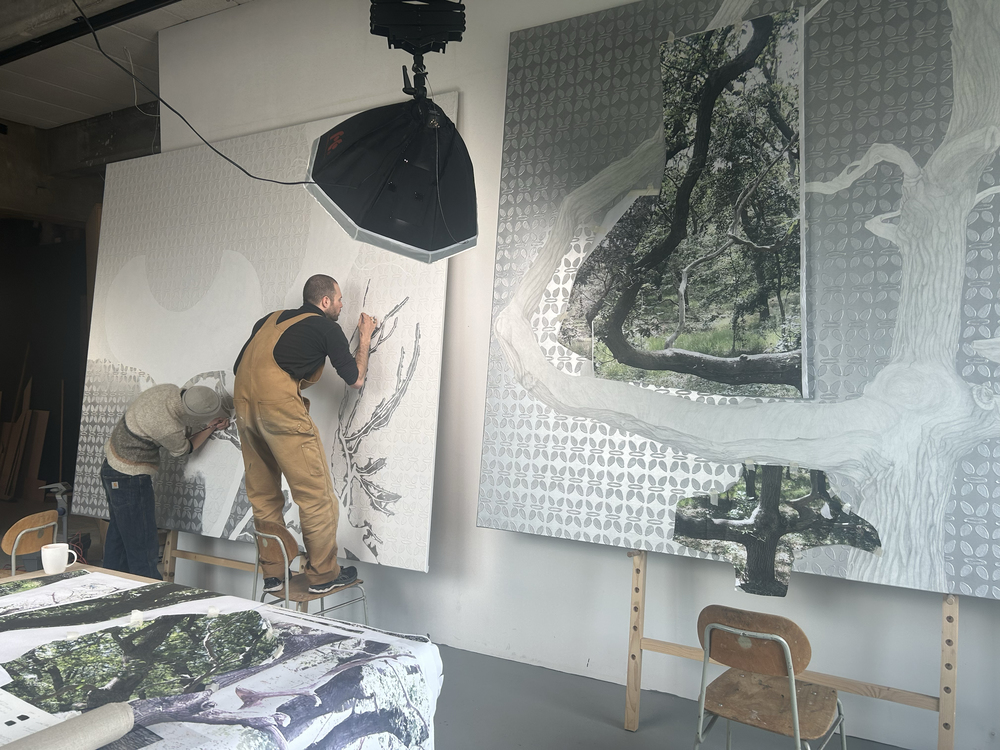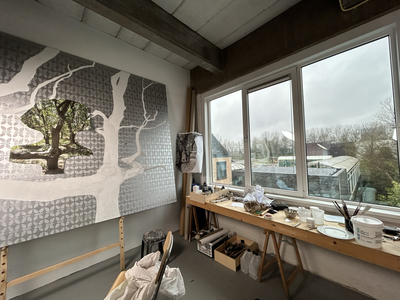
These works are shown as a diptych: The left is Overlapping Landscapes/Skin and to the right, Overlapping Landscapes /Bone. They both measure 2.5 x 3 metres and are pictured below in progress in 2023.
Something about the light in the Netherlands, pictured here towards the end of spring, is captured within this diptych.The pattern is laid out in low relief, using a light gel medium. Painted over in silver, the chromatic intensity of the paintings patterned backdrop change as you walk past them. The trees are rendered in silverpoint, a permanent medium that dates to medieval times, used before graphite pencils became popular. It oxidises, gradually becoming warmer in tone.
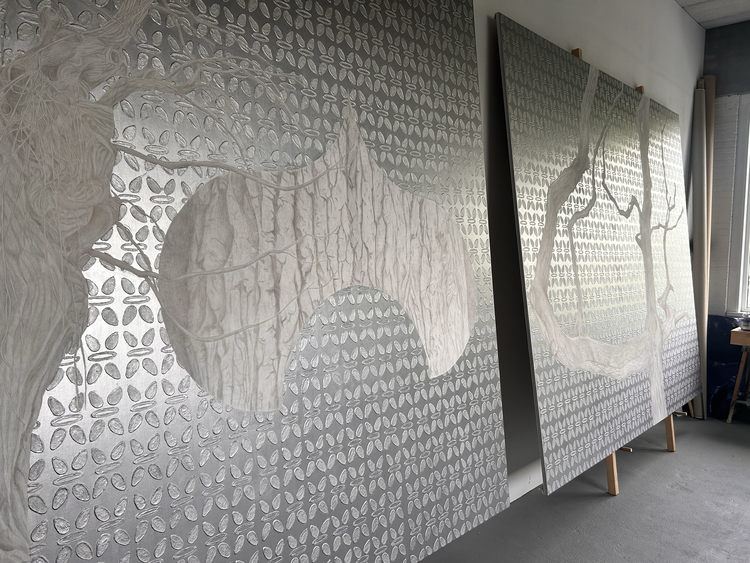
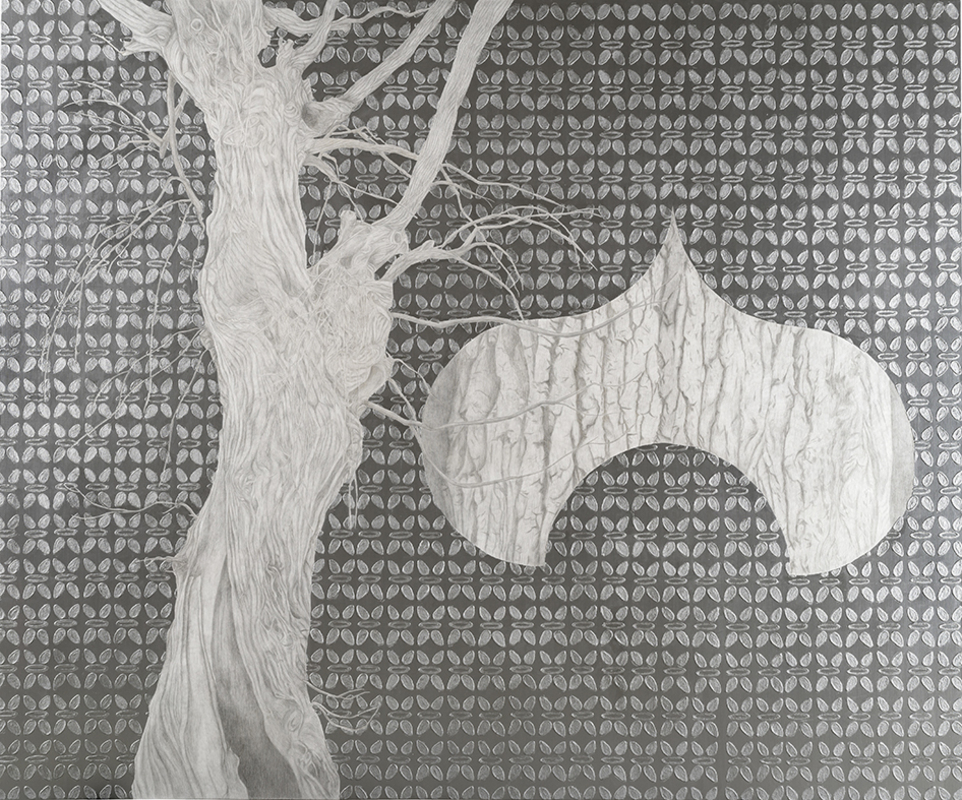
Overlapping Landscapes/Skin. 2.5 x 3 meters, 2023. Photography by Margareta Svensson.
This work pictures a Willow Tree which I pass on my way to studio. It is situated at the Park Frankendael, in the Watergrafsmeer, in the eastern precincts of Amsterdam.Its noticed graceful, gently twisting posture intrigued me and I returned often to look at it.
I drew parallels with the Tribhanga, a term from Indian aesthetics that were formulated in antiquity. The first work that bears this pose is the famous Dancing Girl from Mohenjodaro from 2000 B.C. It is famously visible in the Buddhist iconography of Bodhisattva Padmapani stated in cave 1 in Ajanta, dating from the late 5th century.
The comparable Western term is that of the Contrapposto, mentioned by the Greek sculptor Polykleitis in the 4th century B.C. and was in use even before.
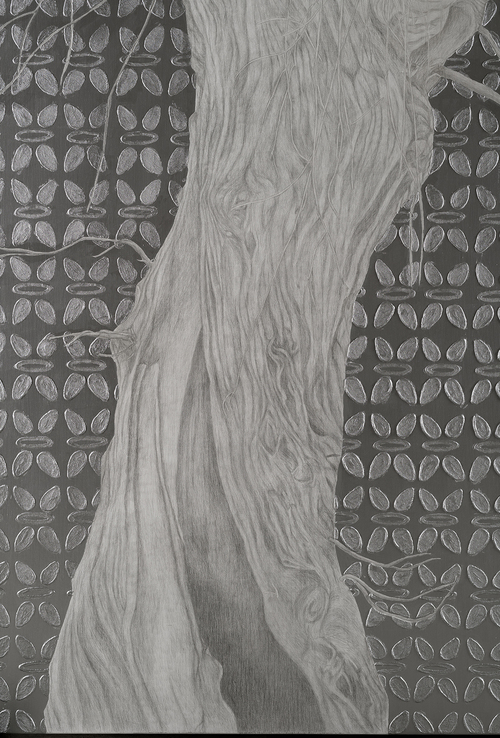
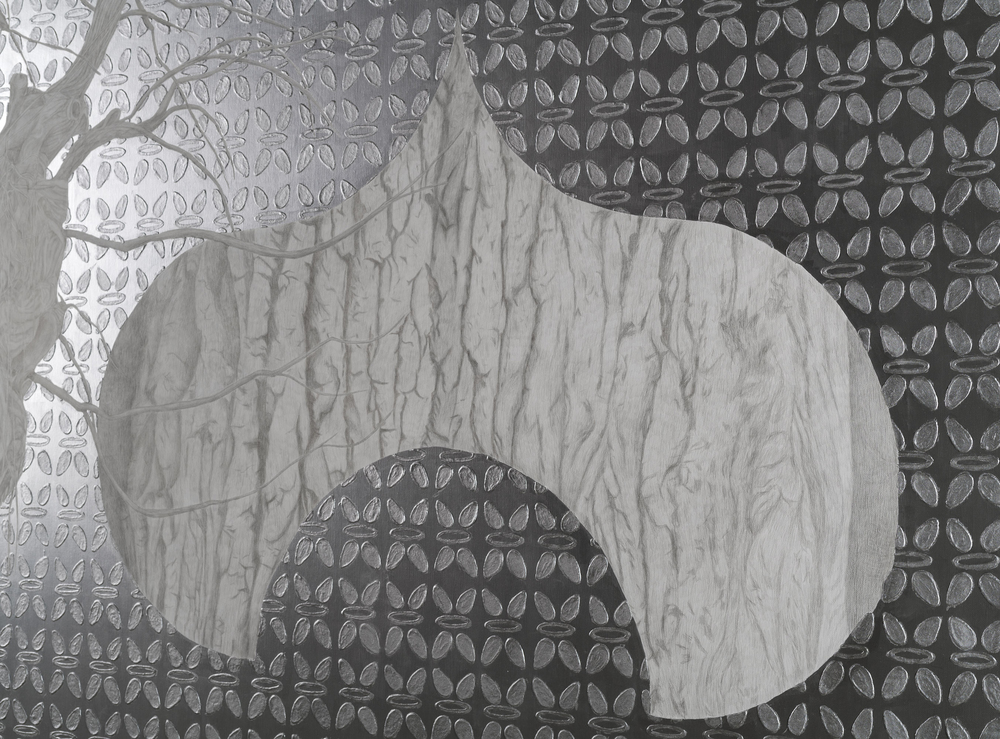
The disc is composed from the pattern I saw on a window grill in Srinagar. Wooden carved window grills, or jaali work, is a craft particular to the region. I composed the disc from a composite of the shape that repeats within grill. Rendered within this shape it is a close up of the bark of an often passed oak tree, whose textured surface reminded me of skin.
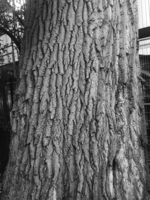

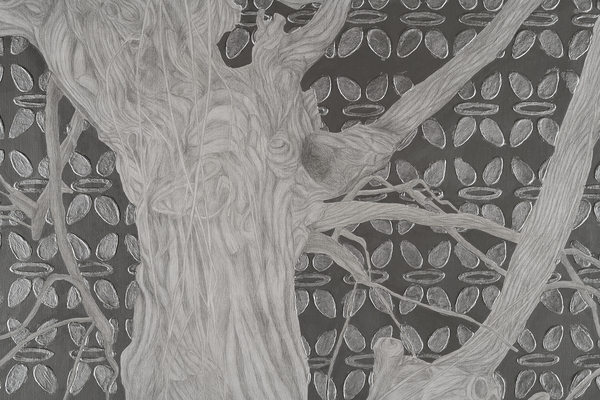
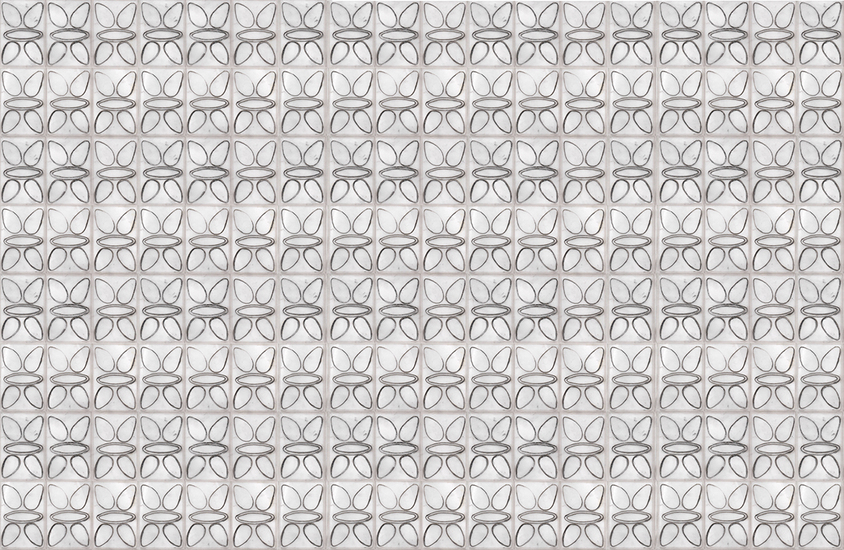
The pattern laid out in low relief originates from the facade of the tomb of Queen Miran Zain, mother to Zain al Abidin (1395-1470), the 9th sultan of Kashmir Sultanate who ruled Kashmir from 1418-1419 and then 1420-1470. Miran Zain hailed from Turkmenistan and the architecture of this monument is typical to Central Asia.
The tile, glazed in blue over brick, is an enigma. While blue glazed ceramic on brick architecture is ubiquitous in Central Asia, I have not seen such a shape before.
It is in in Western terms an egg and dart motif. I gleaned this from Jessica Wallet at the Calouste Gulbenkian Museum while working towards a solo project about this very tile in 2018. It could be a lotus, depicted often in iconography from Kashmir, an egg and dart motif modified. It oftentimes appears to me to be a human motif along the lines of a Venus figurine, although this is not very probable.
Was it cast in Srinagar? Id like to think so. Craftsmen absorb from the environment around them, collaging and juxtaposing images from diverse sources in the creation of motifs.
It might well be a composite, holding within its structure influences from Buddhist, Hindu and Islamic iconographies, religions that coursed through Kashmir over time.
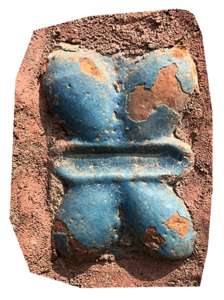
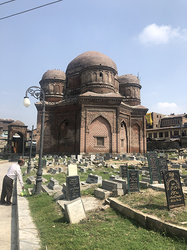
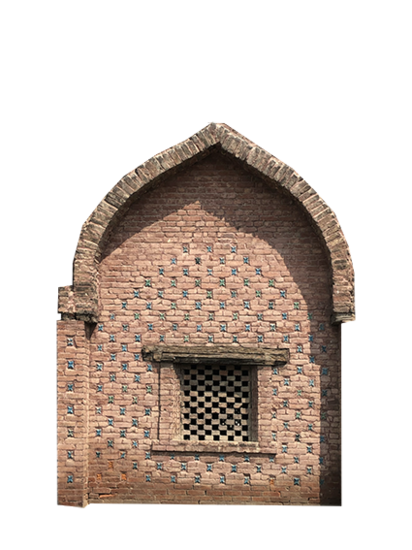
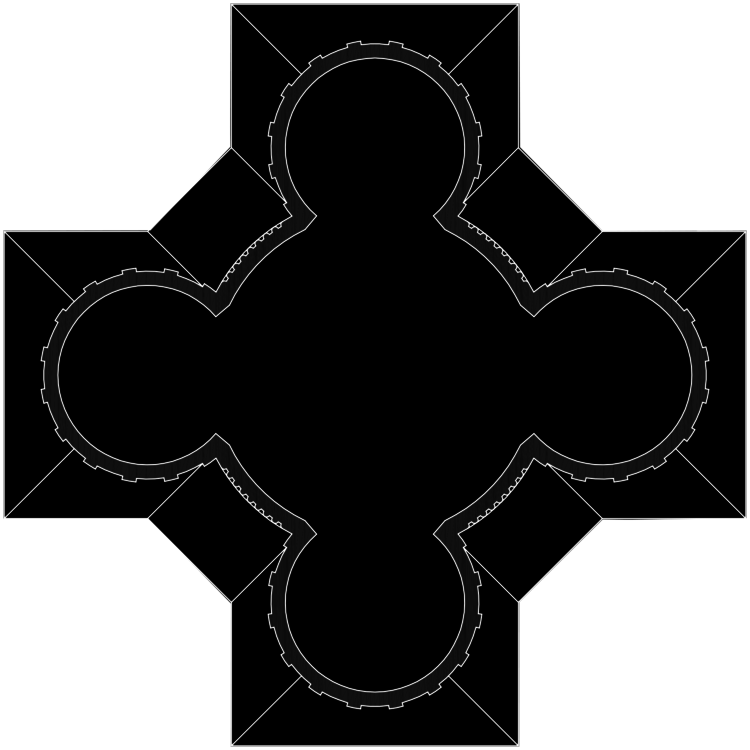
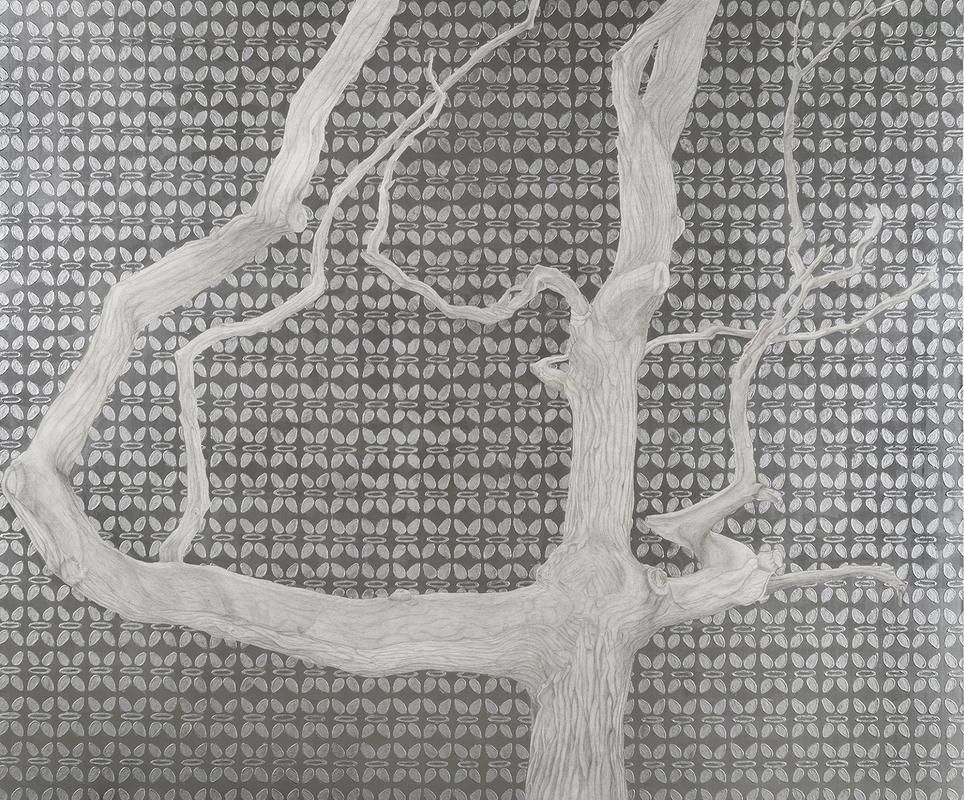
Overlapping Landscapes/ Bone.
2.5 x 3 meters, acrylic and gel on canvas, 2023
Photography by Margareta Svensson.
During the latter 6 months of 2021 I was situated in a residency at large, rambling, studio of the artist Lucebert, situated in Bergen. This was during the period of the coronavirus and I utilised my time with long walks across the nearby Bergensebos, or Bergen Forest, taking in the dune landscape while simultaneously pondering over my work and my imagery.
I stumbled across this Oak tree quite suddenly while crossing the dunes with a friend, headed towards the beach on a clear, sunny day (the North Sea lyes along the reserves western extreme). We were both taken by its shape: It appeared sculptural, a composite of appendages fitted together seemingly like joints.
Rendering it in silverpoint this association, of the trunk and its branches with bone, became more apparent and in a sense these works are about human mortality as much as they are about nature. The shifting chromatic values of the background and the gradually changing tones of the trees due to the use of silverpoint underline this.
The enigmatic tiled shape in the background underlines the accretional forces inherent in culture and nature that shape and form our environment, built or natural.
